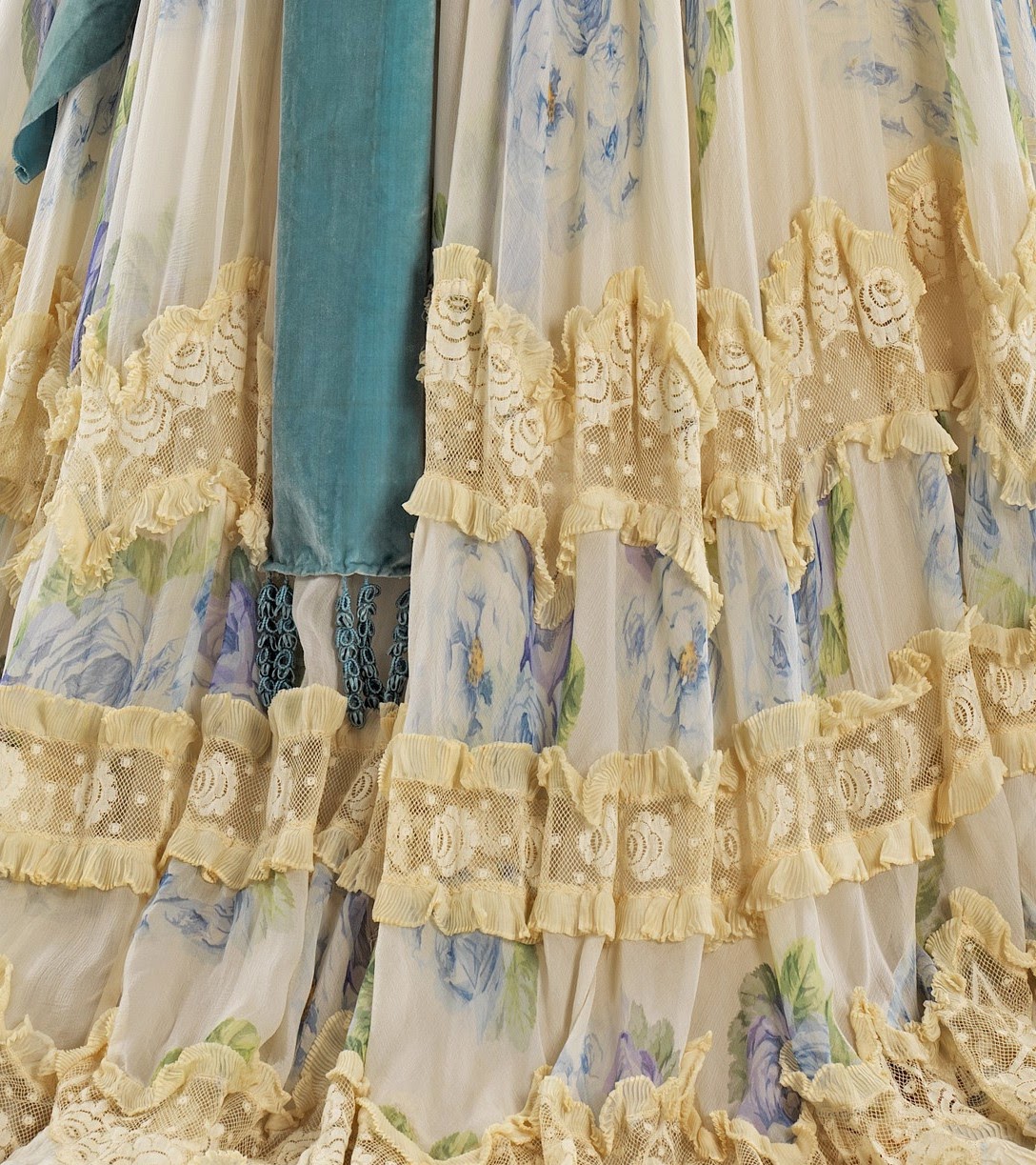Some say the Devil is in them, some say that God is in them, details, that is. Whichever it may be, the truth is that what we clap on our backs would be substantively different, far less evocative and expressive without the addition of special details to make that Attire word unique and beautiful to see.
Though I could fill post after post about various special sleeves, buttons and clasps, collars, cuffs and hems, this post is going to glory in the abundance that is surface decoration.
Cloth can only do so much, though with the onrushing technology of robotics that is changing fast. But in the absence, as yet, of robots that can create complex surface embroideries employing multiple materials requiring multiple techniques to affix them we will still need the patient, endlessly skilled hands of those who embroider onto cloth with cord, ribbon, sequins, feathers, beads and stones.
Here is just a shallow sample of some of the astounding craft out there in the world. Some is subtly done, some is a blaring trumpet. However it expresses, the one thing all these detail images have in common is beauty. They make the eye and the mind and the heart happy to see them. And that, by extension is what we want for ourselves when we wear them.
The three dimensional leaf embroideries of a YSL evening jacket from 1980. Its worked in gold strip, bugle beads and rocaille beads, done by the house of Lesage.
Emile Pingat's couture house produced this amazing evening cape in 1895, relying on dense black work appliques to carry the complex pattern of the cape body out to the surface of the falling pleats that surround it.
House Doucet was known for the unabashed femininity of its work. This afternoon dress, with its wandering insertions of lace, headed with micro-pleated chiffon seems the emblem of the house.
This Scassi evening ensemble from the 1950s is worked over the entire surface with a paisley pattern done in twisted black cord and jet beads. It must have been wonderful to approach this and see subtle texture give way to a complicated, dense surface pattern.
In 1910, Worth did this tea gown for a client. The subtlety of it is marvelous. I love how the applied work is mostly obscured by the chiffon overlay. Very classy work.
Karl Lagerfeld had this work put together for an outrageously extravagant dress he presented in 1990. Matte gold beads, couched cording and gold thread wrapped metal strip all went into this wonderful thing.
Maggie Rouff designed this evening coat for a client in 1898. The entire surface is overlaid with Chantilly lace, and then that has heavy Irish crochet lace appliqued to it, with those dramatic black tassels to punctuate everything. Its an arresting composition of texture and tone.
This is part of a petticoat, from the time when a petticoat was not an undergarment, but rather the part of the gown seen in the center front. This one, in green silk, has been gloriously covered with flowers, birds and butterflies. It makes me smile to look at it. The lady who owned it must have smiled too. 1720, if you're wondering.
Also from the 1700s this detail from a robe a la Francais of steel blue repp silk is worked all over in silver, real silver, as strip, purl and thread, with accents of silk cord. A dress like this would have been for the highest state occasions, and would have been truly dazzling in candlelight.
And for a final gesture another piece from the house of Emile Pingat. Pingat's house was known for its amazing outerwear which often had the most intensely worked surface decorations. Check this out. Utterly jaw dropping.
I can and will explore the work of other cultures and times for the amazing things their artists create, but this should sate your appetites for the moment.










Dazzling, all of them! Of course, I want to see the full garments, now.... : )
ReplyDeleteOf course you do, dear man.
Delete